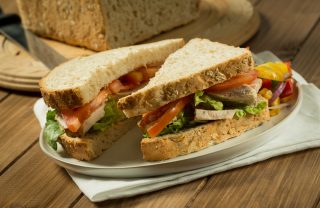
Sandwich, sarnie, hoagie, sub – whatever you call it, the sandwich is a key player on the lunchtime menu.
Reports show that on average, consumers are eating four sandwiches per week (Technomic, 2016). However, with traditional meal times blurring, the rise of street style dining offers a more flexible approach to eating. Planglow (2016) estimates that hot food offerings now account for 8.6% of grab-and-go purchases which is a 2.5% increase in their market share.
This level of competition is no picnic for the simple sandwich so how can retailers reinvent their sandwich offerings to stay ahead of the game?
Most commonly associated with lunchtime, the sandwich offers ultimate convenience in terms of price, packaging, ‘eatability’, variety and availability. How often do we say, “I’ll just grab a sandwich”? Retailers can use this perceived convenience and the lure of the sandwich to attract customers out with the lunch hour rush.
The breakfast sandwich
To meet the growing needs of the busy consumer, retailers need to cater to the grab-and-go market all day long. Around 80% of Brits agree that breakfast is the most important meal of the day (Beacon). More than half of Britons eat breakfast out of the home with a quarter of these looking for foods that are quick and easy to eat (Mintel). Breakfast sandwiches including ingredients such as bacon, egg, sausages and avocado offer a quick, convenient, morning kick-start for busy commuters.
The snackable sandwich
Hectic lifestyles and a rise in single person households allows for foodie freedom; consumers are eating what they want, when they want (The Food People, 2015). Smaller, snackable sandwiches in mix and match flavours will appeal to consumers at all times of the day whether it’s a mid-morning snack, late lunch or late night treat.
The ‘done better’ sandwich
Despite the need for convenience, consumers are not willing to compromise quality. The rise of the ‘done better’ trend is seeing increased demand for high quality ingredients. For example, artisan breads such as sourdough and brioche are becoming more and more popular (Mintel, 2015). Meet the demand for ‘done better’ by revamping traditional flavour combinations with premium breads or fillings.
So how do you make sensational sandwiches?
Accommodating the meal time morph is key to keeping sandwiches at the top of the grab-and-go food chain. Offering premium ingredients which are not easily replicated at home will capture the on-the-go market no matter how much of a hurry they’re in.